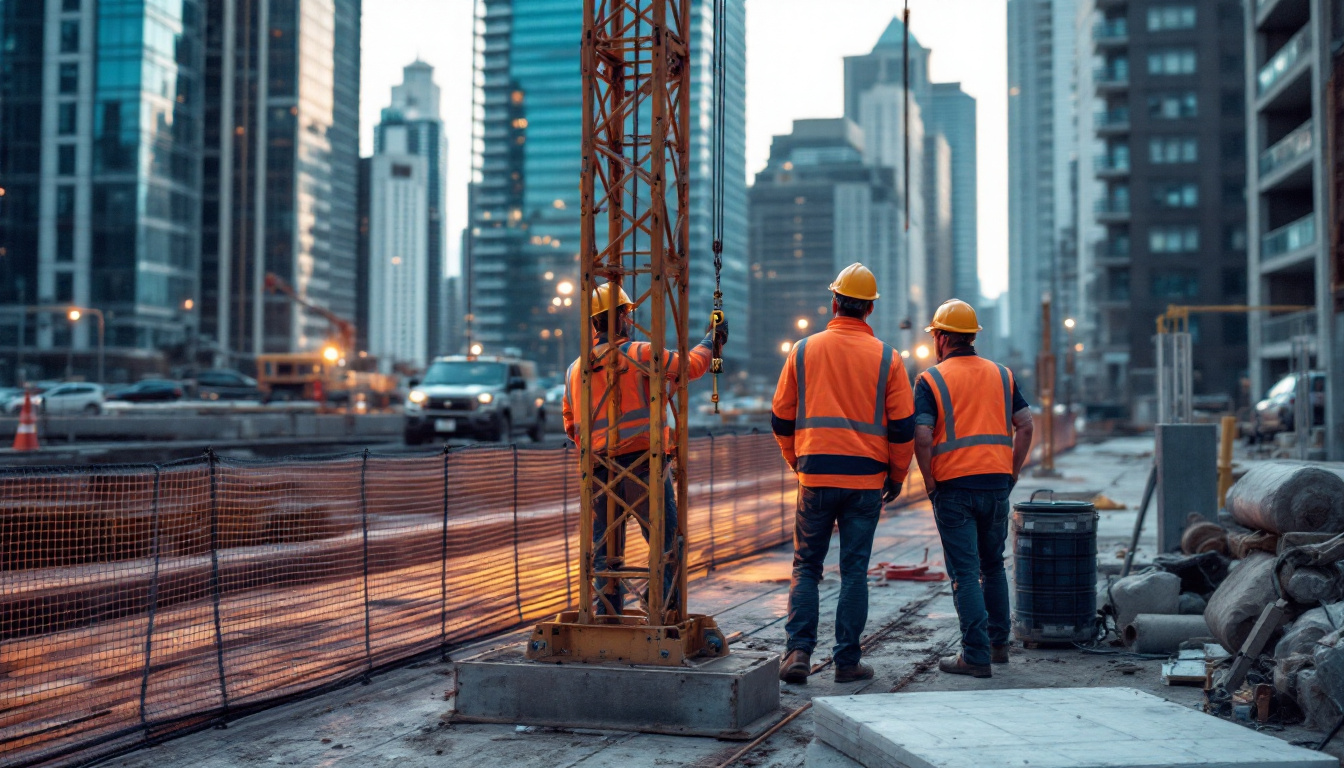Introduction to Urban Noise Pollution

Urban construction sites are notorious for generating significant noise pollution, which can adversely affect the surrounding environment and communities. The clanging of machinery, the beeping of reversing vehicles, and the constant hum of activity contribute to an auditory landscape that can be both disruptive and detrimental to public health. As cities expand and the demand for new infrastructure grows, the need for effective noise reduction strategies using durable materials becomes increasingly critical.
One innovative solution that has gained traction in recent years is the use of chain and shade mesh. This material not only serves to enhance privacy and security on construction sites but also plays a pivotal role in mitigating noise pollution. By understanding how chain and shade mesh works, urban planners and construction managers can implement this solution to create a more harmonious coexistence between construction activities and local communities.
Understanding Chain & Shade Mesh
Chain and shade mesh is a versatile material commonly used in various applications, including fencing, landscaping, and noise reduction. Its design typically consists of interwoven strands of metal or synthetic fibres, constructed to create a durable and flexible barrier. The mesh can be easily installed around construction sites, providing a physical barrier that can significantly reduce noise levels.
Unlike solid barriers, which can create a sense of confinement, chain and shade mesh allows for airflow and visibility, making it a popular choice for urban settings. This balance of functionality and aesthetics makes it an ideal solution for construction sites that need to maintain a level of openness while still addressing noise concerns.
How Chain & Shade Mesh Works
The effectiveness of chain and shade mesh in noise reduction lies in its unique structure. Additionally, the mesh can help prevent debris from escaping the construction site, further enhancing safety. The gaps between the strands help to diffuse sound waves, breaking them up and reducing their intensity. This diffusion process is crucial, as it prevents sound from travelling in a straight line, which is often how noise pollution spreads in urban environments.
Moreover, the material can be treated with sound-absorbing coatings or combined with additional noise-reducing elements, further enhancing its effectiveness. This adaptability allows construction sites to tailor their noise reduction strategies to specific needs and environments.
Benefits of Using Chain & Shade Mesh
Implementing chain and shade mesh on urban construction sites offers numerous benefits beyond just noise reduction, acting as a protective barrier that enhances safety. Firstly, it provides a level of security by creating a physical barrier that deters unauthorised access. This is particularly important in urban areas where construction sites can be vulnerable to vandalism or theft.
Additionally, the mesh can help to improve the overall aesthetic of the site. By using green or decorative mesh options, construction companies can create a more visually appealing environment, which can be beneficial for community relations. This is especially relevant in densely populated areas where construction activities can significantly impact local residents.
Noise Regulation and Compliance
In many urban areas, noise regulations are in place to protect residents from excessive noise pollution. These regulations often specify acceptable noise levels during construction activities and outline the hours during which work can be conducted. Failing to comply with these regulations can result in fines and delays, making it essential for construction managers to implement effective noise reduction and safety strategies.

By using chain and shade mesh, construction sites can demonstrate their commitment to adhering to local noise regulations. This proactive approach not only helps to mitigate potential legal issues but also fosters goodwill within the community. Residents are more likely to support construction projects when they see that companies are taking steps to minimise their impact on the environment.
Case Studies of Successful Implementation
Several urban construction projects have successfully utilised chain and shade mesh to reduce noise pollution on the construction site. For instance, a recent redevelopment project in central London employed this material to create a sound barrier around the site. The results were impressive, with noise levels dropping significantly during construction hours, leading to positive feedback from local residents.
Another example can be found in Manchester, where a large infrastructure project integrated chain and shade mesh into its noise management plan. The project not only complied with local regulations but also enhanced community engagement by involving residents in discussions about noise mitigation strategies. These case studies highlight the potential of chain and shade mesh to transform the urban construction landscape.
Installation and Maintenance of Chain & Shade Mesh at Construction Sites
The installation of chain and shade mesh is a straightforward process, making it an accessible option for many construction sites. Typically, the mesh is constructed and mounted on posts or frames, which can be easily adjusted to accommodate the specific layout of the site. This flexibility allows for quick installation and removal, which is particularly beneficial for temporary construction projects.
Maintenance of chain and shade mesh is also relatively low. Regular inspections can ensure that the material remains intact and effective in its noise reduction capabilities. Any damage can be promptly addressed, ensuring that the mesh continues to serve its purpose throughout the duration of the construction project.
Choosing the Right Type of Mesh
When selecting chain and shade mesh for noise reduction, it is essential to consider various factors. The type of material, mesh density, and height of the installation can all impact the effectiveness of noise reduction. For instance, denser mesh options may provide greater sound absorption, while taller installations can block noise from higher sources.
Additionally, construction managers should consider the aesthetic implications of the chosen mesh. Options that incorporate colours or design can enhance the visual appeal of the site, contributing to a more positive perception among local residents.
Community Engagement and Communication
Effective communication with the local community is crucial when implementing noise reduction strategies on urban construction sites. Engaging with residents can help to address concerns and foster a sense of collaboration between construction companies and the community. This can be achieved through public meetings, informational flyers, and regular updates on construction progress.
By informing the community about the use of chain and shade mesh for noise reduction, and the range of options available, construction companies can demonstrate their commitment to minimising disruption. This transparency can lead to increased trust and support from local residents, ultimately benefiting the project’s overall success.
Feedback Mechanisms
Establishing feedback mechanisms is another effective way to engage with the community. Additionally, the mesh can help control dust, further reducing the impact on the local community. Providing residents with a platform to voice their concerns or suggestions can help construction managers identify potential issues early on. This proactive approach can lead to timely adjustments in noise reduction strategies, ensuring that the needs of the community are met.
Feedback can be collected through surveys, community meetings, or dedicated contact points for residents to reach out with their concerns. This not only helps to improve the construction process but also fosters a sense of ownership among community members, who may feel more invested in the project’s success.
Conclusion
As urban construction continues to expand, the need for effective noise reduction strategies becomes increasingly important. Chain and shade mesh, along with scaffold netting, offers a practical and versatile solution that addresses noise pollution while enhancing security and aesthetics on construction sites. By understanding the benefits, installation processes, and community engagement strategies associated with this material, construction managers can create a more harmonious relationship with the communities they serve.
Ultimately, the successful implementation of chain and shade mesh can lead to quieter urban environments, improved public health, and a more positive perception of construction activities. As cities evolve, embracing innovative solutions like chain and shade mesh will be essential in creating sustainable and livable urban spaces.

